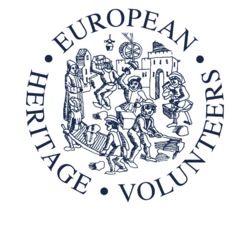The site
The small town of Seiffen nestles in the heart of the Ore Mountains in Germany, inscribed in 2019 on the UNESCO World Heritage List for being the epicentre of remarkable technological advances related to mining that had an important impact for human civilisation. The region is also rich in intangible traditions that have emerged hand in hand with the mining culture and have made this landscape well-known for its traditional crafts and also for being the birthplace of many Christmas traditions.
The town of Seiffen is specially known for its handcrafts. As the silver and tin deposits declined, former miners had to look for new ways to feed their families. In addition to lace making and weaving, the local population turned to wood carving. Nutcrackers, "smoking men", Christmas pyramids – carousels with figures of the Christmas story or from mining – and Schwibbögen – wooden candle arches, displayed in windows, symbolising the opening of a mine – are some of many Christmas goods made in the Ore Mountains. Seiffen is a centre of the wooden toy industry. These beautiful handicrafts and the traditional mining culture of the communities in the Ore Mountains, are presented and kept alive in the fascinating Ore Mountains Open-Air Museum Seiffen and the Toy Museum Seiffen.
The Ore Mountains Open-Air Museum Seiffen was opened in 1973, this year marking the 50th anniversary of its foundation. It is a historic and ethnographic museum in which the everyday life from the 19th and 20th centuries in the Ore Mountains is documented in various houses, building complexes, and workshops. The Ore Mountains Open-Air Museum Seiffen follows the model of Scandinavian open-air museums that emerged on the first half of the 20th century, where original structures are conserved while carefully documenting them as well as preserving their original function including furniture and other interior elements. In this way, the structures can be appreciated by future generations as a time-travel window into historical moments that form the main theme of the Ore Mountains Open-Air Museum Seiffen.
Today there are thirteen building complexes that have been during the last decades transferred to the area of the museum and have been arranged to form a scattered settlement typical of the Ore Mountains. The houses, barns, sheds, and other technical facilities come from the central region of the Ore Mountains. They were selected primarily for them being representative of traditional wood construction techniques and the functions they had containing craftsmanship works.
The museum’s focal theme is the wooden toy production, which is one of the traditional handcrafts that has shaped the cultural identity of Seiffen for the last two centuries. Moreover, the museum serves as a centre for research and documentation of the traditional rural way of life in the Ore Mountains and presents visitors with a complete overview of the mining landscape and its cultural wealth.
The training course
The European Heritage Training Course at the Ore Mountains Open-Air Museum Seiffen will coincide with the 50th anniversary celebration of the opening of the museum.
The participants will be undertaking conservation interventions on the roof structure and the roof of the Flößerwohnhaus, the “Rafter’s House”, which is an original building dating to the 18th century and forms part of the ensemble of the open-air museum.
A rafter’s house is the traditional living house of the rafter and its family, but it housed also other activities related to wood craftmanship. During spring and autumn, lumberjacks, foresters, charcoal burners, and other villagers involved in the wood collection would work in the forests and the rafter would transport the wood through the rivers into the processing facilities where it would be used either in the mines, for construction works or for craftmanship.
The Flößerwohnhaus at the Ore Mountains Open Air Museum Seiffen origins from the valley of the Freiberger Mulde, the biggest river in the Ore Mountains. Today, the building also contains an exhibition of tools used to manufacture traditional wooden shingles used to cover the roofs of the buildings in the Ore Mountains.
The main tasks of the participants will involve carrying out the re-roofing of the Flößerwohnhaus. This process will start with dismantling the shingled roof, followed by replacing rotten beams and repairing the damaged parts of the roof structure and will be completed by recovering the roof with wooden shingles.
In addition, plastering and painting works at the building will be carried out, as well as repairing works on the window frames and the windows. Finally, there will be other supporting activities which the participants will carry out to support the open-air museum, where the participants will be able to experience the day-to-day necessary work that requires the upkeep of a large ensemble of historical buildings.
The works will be carried out in a rotatory way, which will allow all participants to partake on all the different practical works.
The practical activities will be guided by the museum’s qualified staff – a certified heritage technician and a joiner with vast experience in heritage conservation.
The educational programme will be complemented by lectures and guided visits as well as an excursion to landmarks of mining heritage on the German and the Czech sides of the Ore Mountains. The lectures and visits will provide a context for the participants to the works carried out at the open-air museum and offer them an overview of the connection between the mining history and the local traditions of the communities living on both sides of the transboundary cultural landscape Ore Mountains.
The training course was organised by European Heritage Volunteers in cooperation with the World Heritage Association for the Ore Mountain Mining Region, the Seiffen Municipality, the Ore Mountains Open-Air Museum Seiffen and the Ore Mountain Toy Museum Seiffen.
The European Heritage Training Course was part of the World Heritage Volunteers Campaign, a worldwide initiative taking place yearly within the framework of the World Heritage Education Programme at the UNESCO World Heritage Centre.





